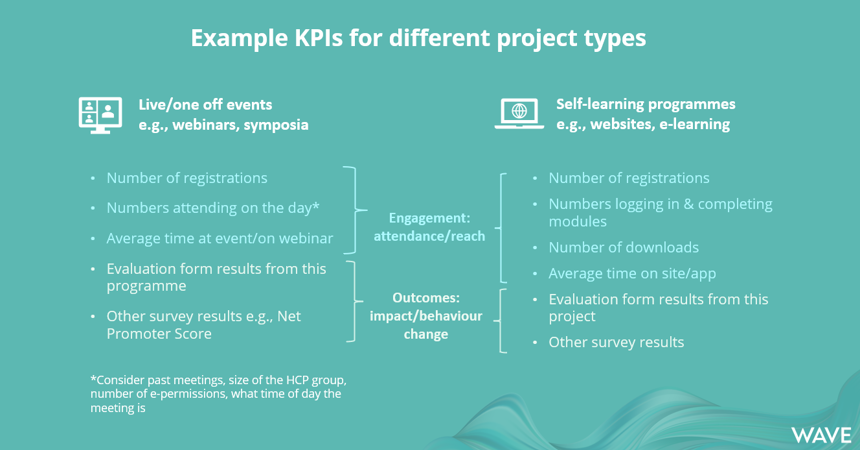Measuring Med Comms: Why KPIs are risky but necessary
23 March 2023
Medical communications programmes are an essential part of helping to inform, engage and support HCPs. But how do you know if they are working?
The answer is, you need to set up key performance indicators (KPIs) at the start of projects and track progress against them.
It sounds simple but the number one reason this doesn’t happen in practice is that it requires a lot of effort at the outset and there is an element of risk for all parties. If you track progress against KPIs you could find that you are not delivering what you had set out to and that can be uncomfortable if handled badly. However, it is extremely useful to know if you are not meeting a milestone KPI as this will allow you to make changes to your programme to ensure it is going to reach the right stakeholders and have the impact you would like it to. Think of it as a health check; by checking how well the programme is working early on, you can step in and take corrective action.
There are 2 types of KPI you need to put in place: engagement KPIs and outcome KPIs.
Engagement KPIs:
The first sort of KPI is all about numbers. When running a meeting, engagement measures include number of registrations and delegate numbers. For an online learning resource, it will include the number of users, time spent on the site and modules completed. For a global campaign, it could be the number of countries taking up and localising materials.
Outcome KPIs:
The second kind of KPI looks at outcomes – what difference did the programme make? You might have hit target for delegate numbers, but will those delegates take away the intended messages? This is harder to measure than engagement but often centres around questions in evaluation forms relating to knowledge gained or intention to change clinical behaviour. So, make sure your evaluation form always has one or two of these sorts of questions.
Occasionally, actual prescribing data will be linked to a programme rollout, perhaps in a specific geography, however it is more difficult to back up such a proposition.

It is a priority to have both these types of KPI in place with realistic targets; for example, how many doctors from your target group can you realistically reach? When setting target registrations for a meeting, look at past events to see what’s achievable.
If you are working within an agency, start the conversation before the project kick off and explain the benefits of this approach. Do what you can to support if the client says it is too difficult.
If you are a client commissioning medical communications programmes and are not focused on the programme KPIs, consider why. Utilising KPIs benefits everyone involved.
Finally, don’t be frightened of putting KPIs in place. If agency and client are true partners, and agree programme design and relevant KPIs, then any failure to reach targets should be jointly owned and a joint corrective action plan put in place. The programme will ultimately be more successful, and you will have the data needed to shout about your success, internally and in award entries!
For more information on how we set and achieve KPIs for our clients, get in touch. Email james@wavehealthcare.co.uk.
Wave is a global healthcare communications agency. We combine scientific, medical and brand expertise to deliver clinically focussed programmes which are trusted by HCPs and drive better patient outcomes. To find out more about us, click here.
If Wave sounds like a place you’d love to work, click here to view our current vacancies.